If you suspect you aren’t using the best type of substrate for your crops you can always ask your Kekkilä Professional distributor for help in finding the right mixture for you.
Let’s have a look at some real-life examples that indicate the coarseness of the substrate mixture that’s being used does not fit your plant’s needs.
Wrong coarseness causes lack of air
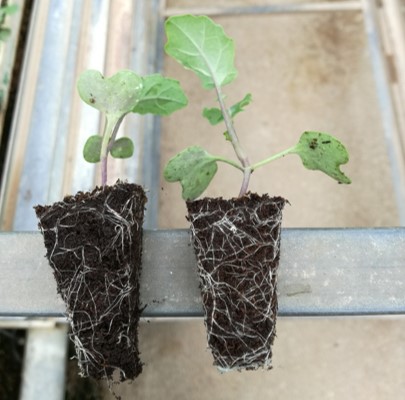
This example shows an underdeveloped root system. As a result, these young plants will not be able to take up all the nutrients they need to grow into strong and healthy plants.
In this case, the issue is caused by using a substrate mixture that is too fine. That means there has been a lack of air for the roots to develop properly.
Instead, you’d like to see your seedling’s roots like this: well-developed, and evenly distributed throughout the plug with a lot of fine roots and root hairs.
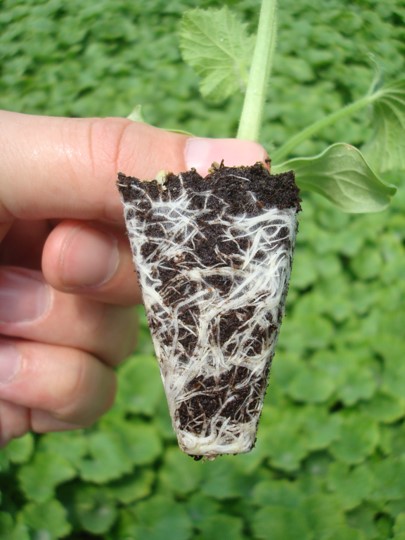
Wrong coarseness causes lack of water and nutrients
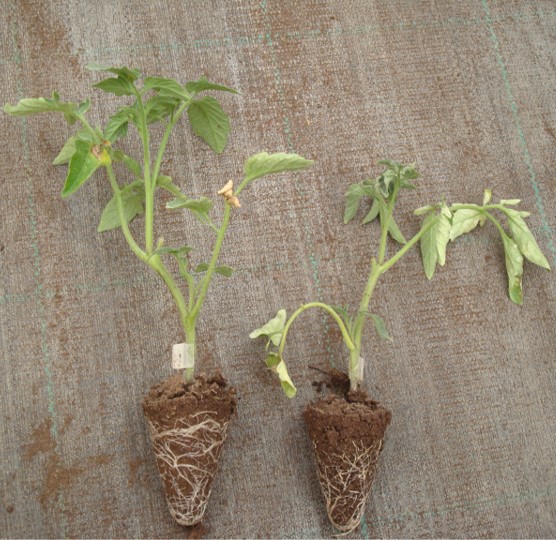
This example shows two young plants that have not been able to take up enough water and nutrients to meet their needs. Due to the coarseness not being right for this purpose, it didn’t provide good support for the root system. Consequently, when the plants were grafted the substrate couldn’t fulfill the demand of the graft for nutrients and water.
Instead, you’d like your young plants to look like this:
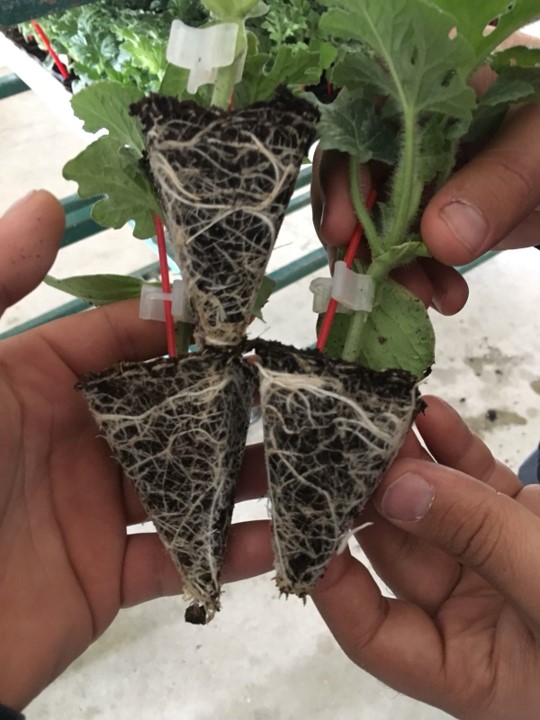
The correct coarseness of the mix provided good support for the root system to develop so when the tomato young plants were grafted they were able to take up enough nutrients and water.
Wrong substrate coarseness causes a lack of support
This third and final example shows a mixture that is draining too much for this type of crop. In the picture on the left, you can see a young plant growing in a substrate mixture with unfit particle size. This particle size provides a bad connection between the roos and the substrate. As a result, the plant is unable to absorb the nutrients and water it needs to develop a strong root system and grow into a healthy plant.
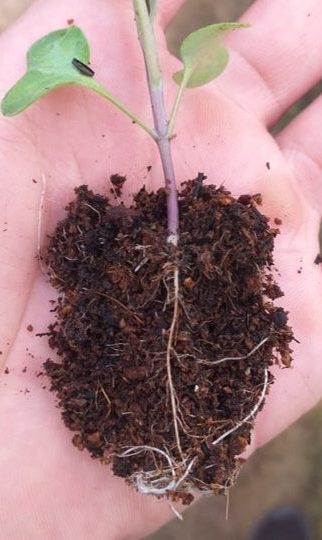
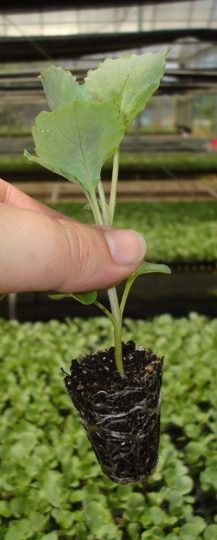
The young plant on the right is growing in a substrate of the right particle size. You can clearly see that the substrate is kept together by a good structure and strong root system, while the substrate on the left falls apart.
To summarise, always make sure you use a substrate mixture that fits your growing methods and the needs of your crops.
In this training video our product manager Ned explains a little more about the way coarseness affects the air and water content within your substrate.
Watch other training videos on our video platform.

